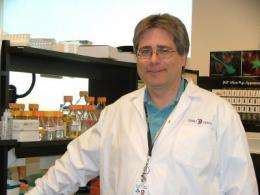Mice with big brains provide insight into brain regeneration and developmental disorders

Scientists at the Ottawa Hospital Research Institute (OHRI) and the University of Ottawa (uOttawa) have discovered that mice that lack a gene called Snf2l have brains that are 35 per cent larger than normal. The research, led by Dr. David Picketts and published in the prestigious journal Developmental Cell, could lead to new approaches to stimulate brain regeneration and may provide important insight into developmental disorders such as autism and Rett syndrome.
Dr. Picketts and his team created the mice to learn more about Snf2l, which is known to play a role in packaging DNA and determining which genes are active versus inactive. They found that the mutant mice were completely normal, except that they had larger brains, more cells in all areas of the brain, and more actively dividing brain stem cells.
"This research represents a fundamental advance in our understanding of how the brain develops, and it also has important practical implications," said Dr. Picketts, Senior Scientist at OHRI and Associate Professor in the Faculty of Medicine at uOttawa. "If we could identify drugs that regulate Snfl2 activity, these could potentially be used to stimulate neural stem cells to help regenerate and repair damage in people who have suffered brain injuries or strokes. We're still at the early stages of this research, but the possibilities are very exciting."
The Snf2l mutant mice are also providing insight into developmental disorders that are associated with changes in brain size. For example, by studying these mice, Dr. Picketts and his team found that Snf2l controls the expression of a gene called Foxg1, which causes the intellectual disability disorder Rett syndrome in some people. While the mutant mice have high levels of Foxg1 and large brains, people with Rett syndrome lack Foxg1 and have small brains. This research shows that Snf2l and Foxg1 work against each other to balance brain size. Autism is also commonly associated with changes in brain size (one third of autistic individuals have a larger brain), however no studies have yet provided a direct link between Snf2l and autism.
"The connections between Snf2l and brain developmental disorders are intriguing," said Dr. Picketts. "We're looking forward to further unravelling these connections and hopefully applying this research to help people who suffer from these conditions."










.jpg)





